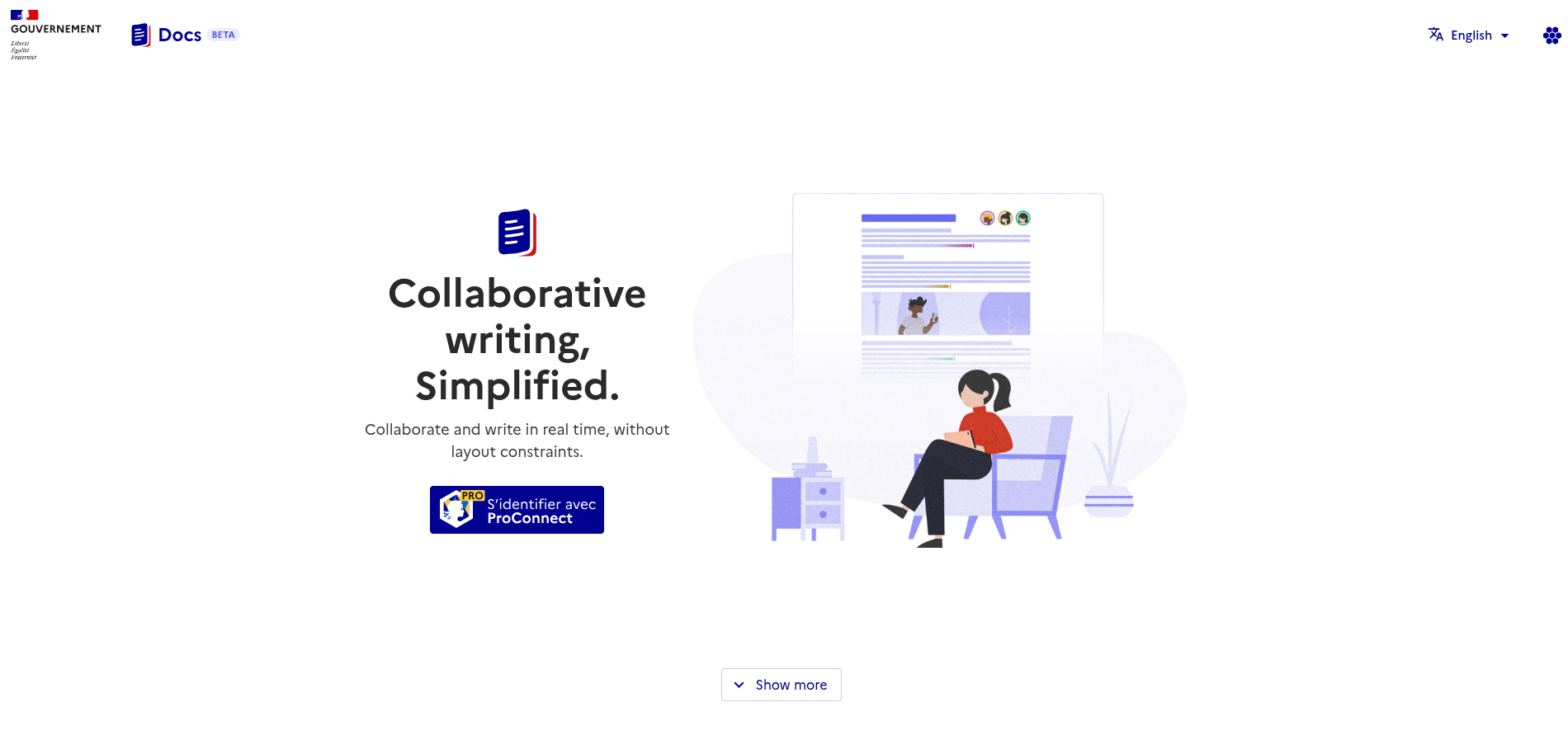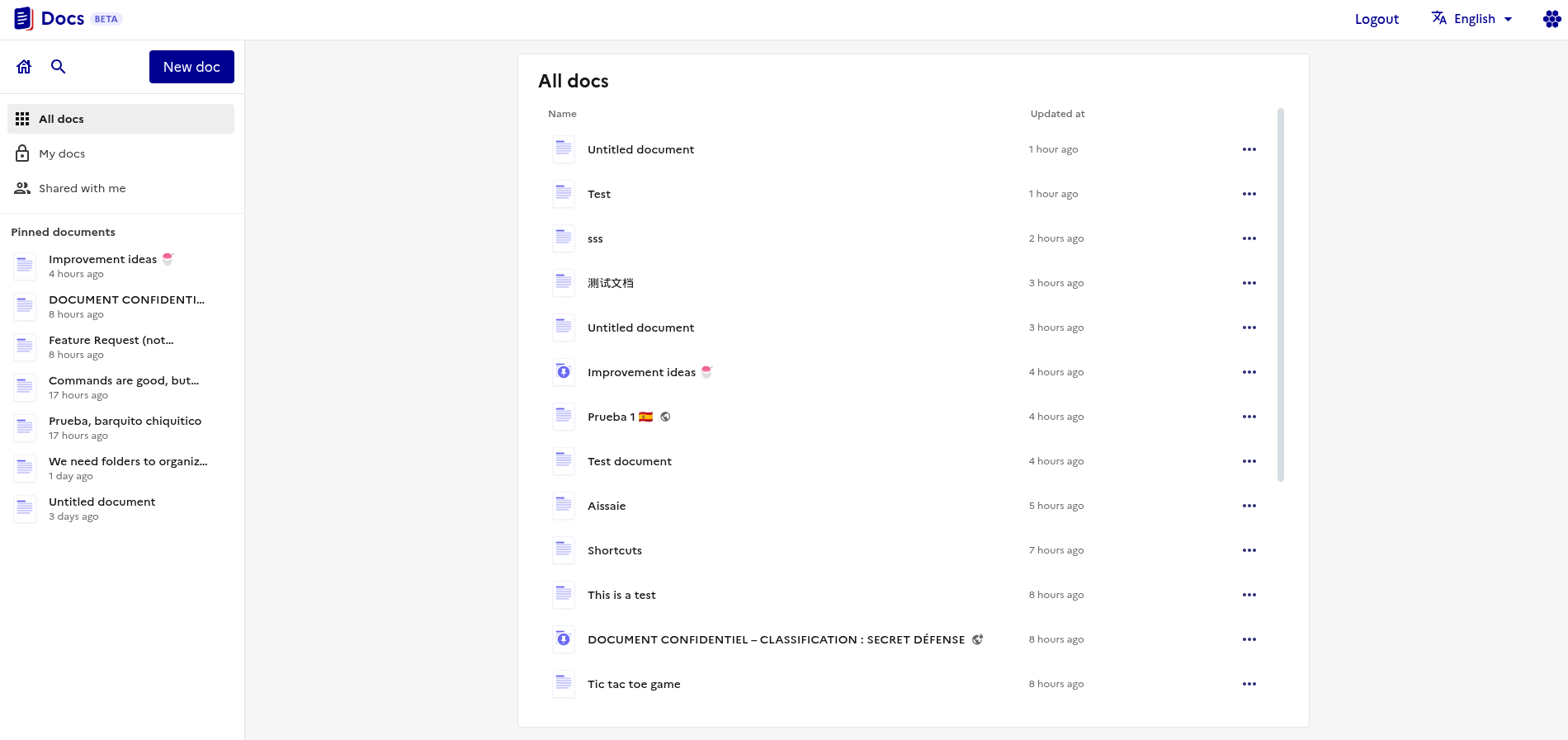
Online document editors have been a great innovation, opening the path for real-time collaboration, easy version control, and allowing remote workers to operate from anywhere in the world with an active internet connection.
While proprietary offerings from Big Tech like Google Docs, Microsoft Word, and Apple Pages dominate the space, there are many open source options that offer the same levels of functionality. They are even betterwhen it comes to data privacy, customization, and self-hosting.
One such option is Docs, which is a self-hosted document editor that is part of La Suite Numérique, an initiative by the French government aimed at providing sovereign digital tools to public institutions and organizations.
Docs: Overview ⭐

The offspring of a collaboration between the French DINUM and the German ZenDiS, Docs is an open source document editor that can be used for document preparation, note-taking, and wiki management.
Its technology stack involves the Django REST Framework, Next.js, Yjs, and BlockNote.js, offering end users a modern document editing experience that doesn’t feel clunky or dated.
Docs has the following highlights:
Real-time collaborationMany formatting toolsWorks offline
Initial Impressions 👨💻
I logged into the live demo for Docs using the provided credentials via the ProConnect login service. Post-login, I was brought into the "All docs" page, where there were already quite a few test documents by other people who were testing Docs.

I created a new document by using the “New doc” button and filled it up with the tale of a sleepy cat named Eepy and took the editor for a test run.
From the left sidebar, I could search for documents or return to the home page, and from the three buttons on top, I could quickly share the document via email or link, download the document in a specific format, pin the document to the sidebar, and access the version history for it.
For editing the contents, a handy toolbar shows up when text is selected. It provides editing tools for changing the text to heading, adding a list, adding a quote, changing the text to bold/italic/underline, changing the indentation, adding a web URL, and quick access to the AI assistant on-board.
The AI assistant has support for multiple languages and can be used to rephrase, summarize, beautify, and emojify a piece of text within a few clicks. And, if you want to rearrange a document, you can do so easily by dragging and dropping the required block to the position you want.
There is also the ability to add blocks like headings, lists, paragraphs, code, page breaks, quotes, tables, audio, video, and files for having great creative control over a document. Plus, all of these blocks are moveable, so you don’t need to worry if you place one in the wrong place.
Concluding this, I can say that Docs is reliable and intuitive enough that most people can get started using it right away, making it a superb choice for teams seeking a privacy-focused document collaboration platform.
📥 Get Docs


The login method for the Docs live demo.
You can take the live demo for a run by entering the following credentials after you click on the big blue button that says ProConnect:
Email: test.docs@yopmail.com Password: I’d<3ToTestDocsDocs (demo)
If you would like to self-host or go through the source code, then you can visit the project’s GitHub repo.
Suggested Read 📖
From It’s FOSS News via this RSS feed



